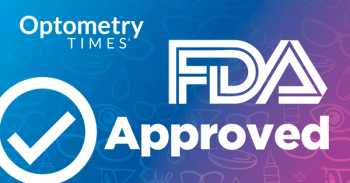
- Digital edition: January 2022
- Volume 14
- Issue 01
Incorporating injections into your practice
Expand your business by administering injectable treatments.
I am a firm believer that if your practice is not growing, then something is dying. One great way to grow your practice is to incorporate injections into it.
Most other health care professionals use needles in some capacity, but most other health care professionals want nothing to do with the eyelid (or eyeball, for that matter). Enter optometrists performing injections.
Before we talk about injections, we need to understand that an incision and an excision are not injections. An incision is cutting tissue without removing tissue; an excision involves removal of tissue.
Not all states allow optometrists to perform injections. If your state allows you to perform injections, you need to determine if there are any restrictions regarding what type of injections you can perform, what you can inject, and if there are any prerequisites before performing injections.
In Georgia, you can perform intralesional and subconjunctival injections. You can inject steroids, antibiotics, and anesthetics. However, you cannot inject subconjunctival anesthetics.
Before performing injections in Georgia, you must successfully complete an injectables training program sponsored by a school or college of optometry credentialed by the US Department of Education and the Council on Postsecondary Accreditation consisting of a minimum of 30 hours approved by the Optometry board.
Generally speaking, there are 4 major injection sites. Going from the most superficial to the deepest, they are intradermal, intravenous, subcutaneous, and intramuscular.
An intralesional eyelid injection is an intradermal injection. There is no defined subcutaneous space in the eyelid. Subcutaneous injections are used for medications, such as insulin and allergy shots, that are absorbed slowly.
There are 5 major types of periocular injections: subconjunctival, intralesional, sub-Tenon, peribulbar/local anesthetic blocks, and specialty uses, eg, botulinum toxin. Before administering any injections, the patient must provide informed consent. Performing anything without consent is considered assault.
Informed consent must include the following: lay person’s terms, discussion of allergies, description of the procedure, rationale for treatment, alternative treatments, documented abnormal/off-label use, discussion of all risks/uncertainties, patient statement of understanding and consent, and patient signature.
Specifically, for intralesional steroid injections, which are performed to treat chalazion, my informed consent, which must be signed by the patient, includes the following:
- No requirement to have the injection
- Right to have or decline the injection into the eyelid today or at any point in time in the future
- Consideration of off-label use of the medication
- Risks associated with the injection include but are not limited to hemorrhage, increased intraocular pressure, changes in skin pigmentation, eyelid edema, conjunctival necrosis, keloid scarring, capillary hemangioma, cataract, and eyeball perforation.
- Multiple injections may be required.
- Injection(s) may not partially or completely resolve the problem.
- If injection(s) do not solve the problem, surgical removal will be the next option if the patient wants complete resolution.
- Declined keloid scarring in the past
- Consent to receive the steroid injection of triamcinolone acetonide injectable suspension 40 mg/mL (Kenalog-40) into the affected eyelid(s)
- An understanding that it is impossible for the doctor to inform me of every possible complication that may occur
- No guarantees about results have been made.
- All my questions have been answered.
- Understand and accept the risks, benefits, and alternatives of a triamcinolone acetonide injection
- Consent to be tested for sexually transmitted infections
The most common question I get after my patients read the informed consent is: Why do I have to consent to be tested for sexually transmitted infections? The answer revolves around the potential for you or your technician to get a needle stick.
Regarding alternative treatments, the patient can continue current treatment, do nothing, have a steroid injection, or be referred for surgical removal (in Georgia).
You must educate the patient that a steroid injection does not have a 100% success rate and that sometimes the injection has to be repeated or may not help at all. After educating the patient about all alternative treatments, it is the patient’s decision (not the doctor’s) regarding what to do.
Regarding success rates of intralesional injections (ie, chalazion injections), a rule of thumb is if the chalazion is smaller than 6 mm and/or less than 6 months in duration, there is a 60% chance that the lesion will respond positively.
However, I have seen no research to support this rule. Anecdotally, my success rates are much higher.
Because we are injecting steroid into a very small area (the eyelid), the patient must understand they will look worse leaving your office after a steroid injection than when they arrived due to increased eyelid edema.
Especially if you overinject, you can cause a black eye. I always have the patient look in the mirror after the injection before they leave the office so that they are aware of what they look like after the injection.
In general, the leading cause of large malpractice claims against optometrists is a misdiagnosis that leads to a failure to refer. A reoccurring chalazion in the same location must be referred for a biopsy to rule out sebaceous carcinoma.
Supplies and guidance
The intralesional steroid-injection supplies needed include the following:
- Gloves
- Anesthetic
- Syringe/needle
- Triamcinolone acetonide injectable suspension 40 mg/mL
- Chalazion forceps with Jaeger plate
- Sharps container and biohazard waste bag
- Antibiotic ointment and cotton-tipped applicator
- Autoclave
Regarding gloves, avoid latex and vinyl. Up to 6% of the US population has an allergy to latex, and vinyl offers less of a protective barrier.
Regarding anesthesia, I only use proparacaine in the eye. I do not feel the need to use topical lidocaine 4% on the eyelid. However, if you choose to use topical lidocaine 4%, apply for 60 seconds twice before injecting.
Because we are injecting the same amount and using the same size needle for both lidocaine and steroid injections (i.e. same amount of pain for both a lidocaine injection and steroid injection), I choose to not inject lidocaine before a steroid injection.
The gauge of the needle is the inner measurement or opening of the needle. The higher the number, the smaller the needle. The bevel is the slanted portion of the needle tip that facilitates nontraumatic entry.
For intralesional and subconjunctival injections, the bevel will be up during injection, the needle used is 27 gauge (half inch), and the syringe is 1 mL. Make sure the needle is latex free.
The steroid used is triamcinolone acetonide injectable suspension 40 mg/mL. That means there is 40 mg of triamcinolone acetonide per 1 millimeter (mL) of solution.
Because you will only be injecting 0.1 to 0.2 mL of solution, ie, 0.1 to 0.2 cubic centimeter (cc), you will only be injecting 4 mg to 8 mg of triamcinolone acetonide (1 cc = 1 mL).
Once the steroid is opened, it must be discarded within 28 days. The steroid will be stored at room temperature. Because the steroid is a suspension, it must be shaken before use.
Chalazion forceps with a Jaeger plate is applied to the eye before injection. A Jaeger plate is placed between the lid and the globe during injections to prevent puncturing the globe.
By firmly tightening the chalazion forceps, it acts like a tourniquet—the pain of the forceps distracts the patient from the pain of the injection. Anecdotally, patients state the chalazion forceps hurt worse than the injection itself.
After the injection, the chalazion forceps will need sterilized. The first step is manual cleaning with a stiff plastic cleaning brush, neutral detergent, and distilled water.
Next, to sterilize, we use the SteriDent autoclave at 250o F for 30 minutes or more. If you do not want to use an autoclave, you can use chemical sterilization in a germicidal bath for 10 hours and then rinse with distilled water.
After the injection, I apply an antibiotic ointment with a cotton-tipped applicator. I do not send the patient home with any antibiotics. All sharps must go into a sharps container, and anything exposed to blood that is not sharp must go into a biohazard waste bag.
Never inject cellulitis (see Figure 1 above), malignant lesions (see Figure 2 below), open wounds (see Figure 3 below), or hordeolum. Preseptal cellulitis is an infection of the eyelid and surrounding skin anterior to the orbital septum. Orbital cellulitis is an infection of the orbital tissues posterior to the orbital septum.
Developing a needlestick protocol
Although we try our best and hope to avoid a needle stick, we need to have a plan in place if we ever have one. The Occupational Safety and Health Administration (OSHA) makes rules in the workplace to prevent deaths, injuries, and illness related to work.
Every time I perform an injection, I remind my technician to never bend, recap, or reach for contaminated needles.
The transmission rate for needles sticks with for HIV is 0.3%. The transmission rates for hepatitis C virus (HCV) and hepatitis B virus (HBV), respectively, are 2% and 6% to 30%.
For our exposure-control plan, we recommend everyone in our office be vaccinated for hepatitis B, communicate hazards to all employees, and have OSHA training on sharps.
Although we have never had a needlestick, we review our plan annually. If we had a needlestick, we have procedures for evaluating circumstances surrounding the exposure incident. Note: Our workers’ compensation insurance includes free OSHA training.
Our needlestick protocol consists of the following:
- washing with soap and water;
- notifying supervisor;
- detailing the incident in the employee’s work-related injuries log;
- identifying the patient source;
- HIV, HBV, and HCV testing, if necessary; and going to a treatment facility delegated by workers’ compensation insurance, if necessary.
For work-related injuries, you must go to the facility delegated by workers’ compensation insurance, which may differ from facilities delegated by your major medical insurance.
For additional questions, the CDC Clinicians’ postexposure prophylaxis line is 1-888-448-4911. For HIV needle sticks, preventative treatment needs to be started within 2 hours of the exposure, so time is of the essence.
Billing and coding
Any evaluation that was done to determine the need for the surgical procedure (ie, an eyelid injection) is included in that surgical procedure. From 1 to 7 chalazion injections performed on the same day get billed and reimbursed the same.
To justify an examination (992xx or 920xx) on the same date of service as a surgical procedure, a second and significant diagnosis, if appropriate, is needed to support the examination and the –25 modifier needs to be added to the examination.
The –25 modifier is defined as an unrelated procedure with a different diagnosis than the primary diagnosis. A diagnosis independent of the surgical procedure is required, and the primary chief complaint for the examination should be independent of the surgical procedure performed that day.
Note: The –25 modifier is a red flag for audits.
I rarely perform subconjunctival injections. However, I believe that more treatments in the future will necessitate subconjunctival injections, so I appreciate the Georgia Optometric Association’s foresight in getting approval for subconjunctival injections.
Conclusion
Performing injections is a great way to broaden your scope of practice, gain experience, and become comfortable handling needles before new, injectable treatments emerge for other eye diseases.
Articles in this issue
almost 4 years ago
Mitigate diabetic retinopathy with early improved glucose controlalmost 4 years ago
Quiz: Postoperative carealmost 4 years ago
A narrative guide for cataract postoperative surgical carealmost 4 years ago
The safety and efficacy of mass-produced colored contact lensesalmost 4 years ago
Cryopreserved amniotic membrane excels at healing ocular surface woundsalmost 4 years ago
Case study: persistent keratitis OS presents in 68-year-old womanNewsletter
Want more insights like this? Subscribe to Optometry Times and get clinical pearls and practice tips delivered straight to your inbox.













































.png)


